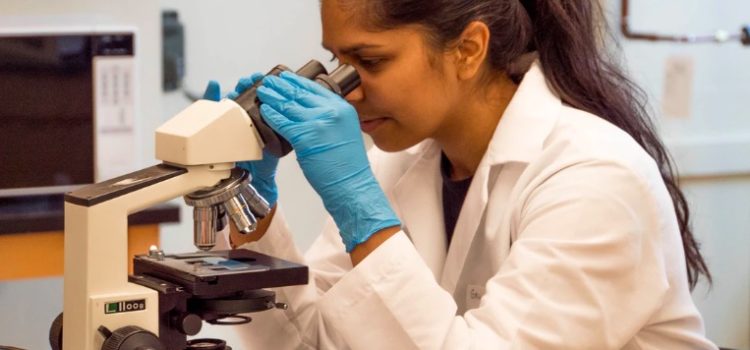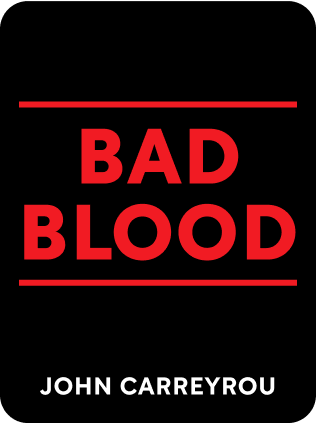

This article is an excerpt from the Shortform book guide to "Bad Blood" by John Carreyrou. Shortform has the world's best summaries and analyses of books you should be reading.
Like this article? Sign up for a free trial here .
What was the Theranos Edison? What did this product do and did it work?
The Theranos Edison was the supposed main product of Silicon Valley health startup Theranos. According to the company, the Theranos Edison was a small machine that could do complete bloodwork with blood from a fingertip prick.
Read more about the Theranos Edison and what happened to it.
Theranos: Edison Product
It’s common for early stage startups raise money without a product. But typically, when they don’t show meaningful progress, their investors back out and they shut down.
How could Theranos continue its operations for over a decade, when its product did virtually nothing it claimed?
In summary, it was a combination of active deception by Theranos management, combined with psychological biases preventing outsiders from pushing further for the truth.
To hide the fact that their proprietary machine that didn’t work, Theranos crossed the limits of scientific legitimacy. These were non-standard distortions of scientific practice.
- Theranos’s pitch was they could diagnose diseases on far less blood than normal blood draws. But it didn’t actually work. To process microliters of blood on standard third-party machines, they had to dilute the blood sample to have enough sample to read. However, this lowered the analyte concentrations below what the machines were qualified to handle, below their sensitivity and causing distorted results.
- In coefficient of variation studies (a measure of precision and repeatability), deviant results were repeated until they got satisfactory results – basically retaking a test until you get the right answers. Furthermore, they used only the median values of 6 replicates, guaranteeing a tighter CV.
- In quality control checks, outliers were inappropriately thrown out – basically changing the answer to get what you want.
- In sensitivity tests for syphilis, results that fell into an “equivocal zone” weren’t included in the calculations, letting Theranos widen the zone until sensitivity reached whatever number it wanted.
- When running proficiency testing for clinical lab accreditation, they ran the samples on third-party analyzers instead of their proprietary Theranos Edison machines. In other words, they were marketing the importance of their Edison machines to the public, while they actually ran samples on third-party machines. Their distorted logic to justify was that the Theranos Edison’s technology was unique and had no peer group, so its results couldn’t be compared to the accrediting body’s machines.
When scientific manipulation wasn’t enough, Theranos actively deceived people and lied by omission.
- To press and investors, Elizabeth embellished claims level of accuracy and number of assays that could be run on their proprietary machine.
- In truth, its accuracy was poor and it could run much fewer tests than claimed. They relied on third-party devices to run most of their assays, meaning Theranos was far less innovative than believed.
- Then, when regulators came to audit their operations, Theranos employees blocked investigators from accessing the room containing their new machines, misleading them into believing their third-party machines were the only ones operating. In fact, their faulty proprietary machines were inappropriately processing samples, when they weren’t improved to do so.
- Theranos was scheduled to run demonstrations for pharmaceutical company partners. When their devices didn’t work live, they ran fake demonstrations instead.
- Requests from a Walgreens employee to run validation tests on their machines were dismissed.
- The senior Walgreens management didn’t push back, because once they were committed to building out Theranos facilities, they desperately needed Theranos to work.
- Revenue projections to investors were vastly embellished by >5x.
- Outsiders had the impression that Theranos was flying high – that in a military partnership, Theranos devices were in the back of Humvees; that Theranos had plenty of secure partnerships with big name firms; that Theranos was cash flow positive. Naturally, Theranos didn’t care to correct them
In the end, the Theranos Edison technology was a failure, and this information was covered up by the company.

———End of Preview———
Like what you just read? Read the rest of the world's best book summary and analysis of John Carreyrou's "Bad Blood" at Shortform .
Here's what you'll find in our full Bad Blood summary :
- How a 19-year-old Stanford dropout created a fraudulent company that deceived savvy investors
- What Theranos claimed their proprietary technology could do
- How psychological biases could cause you to fall for such a deception






